How Did COVID-19 Pandemic Impact Safety Performance on a Construction Project? A Case Study Comparing Pre and Post COVID-19 Influence on Safety at an Australian Construction Site
Abstract
1. Introduction
2. Literature Review
2.1. Impact of COVID-19 on Safety Performance
2.2. Interrelationship between Safety Performance and Safety Climate
2.3. Leadership Aspects Impacting Workers during COVID-19
2.4. Measuring Construction Safety Climate
3. Study Objectives
- Evaluate COVID-19 influence on the safety climate and safety performance of a construction project.
- Evaluate the influence of leadership on a construction project safety performance under the impact of COVID-19.
4. Methods
4.1. Project Selection
4.2. Safety Climate Survey
4.3. Safety Performance
4.4. Statistical Analysis Method
4.4.1. Safety Climate Survey Model
e.g., Lm(COM_Avg ~ COVID + ORGANIZATION + GENDER + AGE, data = sc_survey_data)
e.g., emmeans(COM_avg, pairwise ~ AGE)
4.4.2. Safety Performance Model
e.g., Lm(INCIDENT Rate ~ COVID + LEAD, data = P1_safety_stats)
5. Results
5.1. Safety Climate Survey
5.1.1. Demographics
5.1.2. Measures of Difference between Safety Climate Surveys–Pre/Post COVID-19
5.1.3. Communication Safety Perceptions–COVID and Age Factor Analysis
5.1.4. Supportive Environment Safety Perceptions–Age Factor Analysis
5.1.5. Organization Factor Analysis–Work Hazard Identification and Workers Involvement
5.1.6. Organization Factor Analysis–Team and Individual Safety Perception Elements
5.1.7. Safety Climate Survey Summary
5.2. Safety Performance Results
5.2.1. COVID-19 Effect
5.2.2. Leader Effect
6. Discussion
6.1. Influence of Leadership through COVID-19 and Safety Perceptions
6.2. Influence of Age on Safety Perceptions
6.3. Influence of Organization on Safety Perceptions
6.4. Limitations
7. Conclusions
Author Contributions
Funding
Institutional Review Board Statement
Informed Consent Statement
Data Availability Statement
Acknowledgments
Conflicts of Interest
References
- International Labor Organization. ILO Sectoral Brief: Impact of COVID-19 on the Construction Sector; International Labour Organization: Geneva, Switzerland, 2021. [Google Scholar]
- WA Government. COVID-19 Coronavirus: State of Emergency Declarations; WA Government: Western Australia, Australia, 2020.
- Australian Health Protection Principal Committee (AHPPC). Australian Health Protection Principal Committee (AHPPC) Advice to National Cabinet on 30 March 2020. 2020. Available online: https://www.health.gov.au/news/australian-health-protection-principal-committee-ahppc-advice-to-national-cabinet-on-30-march-2020-0 (accessed on 31 March 2022).
- Australian Health Protection Principal Committee (AHPPC). Australian Health Protection Principal Committee (AHPPC) Statement on the Review of Physical Distancing and Person Density Restrictions; Australian Government Department of Health and Aged Care: Canbera, Australia, 2020. Available online: https://www.health.gov.au/news/australian-health-protection-principal-committee-ahppc-statement-on-the-review-of-physical-distancing-and-person-density-restrictions (accessed on 31 March 2022).
- Bleby, M. Construction Sheds $14 billion since March, in The Australian Financial Review. 2020. Available online: https://www.afr.com/property/commercial/construction-sheds-14-billion-since-march-20200519-p54ukk (accessed on 31 March 2022).
- European International Contractors. COVID-19 and the Global Construction Business; European International Contractors: Berlin, Germany, 2020; Available online: https://www.eic-federation.eu/COVID-19-and-global-construction (accessed on 31 March 2022).
- Deloitte. The Impact of COVID-19 on Infrastructure Projects and Assets; Deloitte Nigeria: Lagos, Nigeria, 2020; Available online: https://www2.deloitte.com/content/dam/Deloitte/ng/Documents/finance/ng-the-Impact-of-COVID-19-on-Infrastructure-project-and-assets_27052020.pdf (accessed on 21 February 2022).
- Department of Infrastructure Transport Regional Development Communications and the Arts. Infrastructure Investment Response to COVID-19. 2020. Available online: https://investment.infrastructure.gov.au/about/national-initiatives/response-to-covid-19.aspx#:~:text=In%20June%202020%2C%20the%20Australian,commence%20within%206%20months%3B%20and (accessed on 29 March 2022).
- Australian Health Protection Principal Committee (AHPPC). Australian Health Protection Principal Committee (AHPPC) 2020–2022. Available online: https://www.health.gov.au/committees-and-groups/australian-health-protection-principal-committee-ahppc (accessed on 31 March 2022).
- Alsharef, A.; Banerjee, S.; Uddin, S.; Albert, A.; Jaselskis, E. Early Impacts of the COVID-19 Pandemic on the United States Construction Industry. Int. J. Environ. Res. Public Health 2021, 18, 1559. [Google Scholar] [CrossRef]
- Pamidimukkala, A.; Kermanshachi, S. Impact of COVID-19 on field and office workforce in construction industry. Proj. Leadersh. Soc. 2021, 2, 100018. [Google Scholar] [CrossRef]
- Stiles, S.; Golightly, D.; Ryan, B. Impact of COVID-19 on health and safety in the construction sector. Hum. Factors Ergon. Manuf. 2021, 31, 425–437. [Google Scholar] [CrossRef] [PubMed]
- Del Rio-Chanona, R.M.; Mealy, P.; Pichler, A.; Lafond, F.; Farmer, J.D. Supply and demand shocks in the COVID-19 pandemic: An industry and occupation perspective. Oxf. Rev. Econ. Policy 2020, 36, S94–S137. [Google Scholar] [CrossRef]
- Parker, S.; Fruhen, L. Impact of FIFO Work Arrangements on the Mental Health and Wellbeing of FIFO Workers; Center for Transformative Design, Government of Western Australia Mental Health Commission: Perth, Australia, 2018. Available online: https://www.mhc.wa.gov.au/media/2547/impact-of-fifo-work-arrangement-on-the-mental-health-and-wellbeing-of-fifo-workers-full-report.pdf (accessed on 21 February 2022).
- Almohassen, A.S.; Alkhaldi, M.S.; Shaawat, M.E. The effects of COVID-19 on safety practices in construction projects. Ain Shams Eng. J. 2022, 14, 101834. [Google Scholar] [CrossRef]
- Nnaji, C.; Karakhan, A.A. Technologies for safety and health management in construction: Current use, implementation benefits and limitations, and adoption barriers. J. Build. Eng. 2020, 29, 101212. [Google Scholar] [CrossRef]
- Jones, W.; Gibb, A.G.; Chow, V. Adapting to COVID-19 on construction sites: What are the lessons for long-term improvements in safety and worker effectiveness? J. Eng. Des. Technol. 2021, 20, 66–85. [Google Scholar] [CrossRef]
- Onubi, H.O.; Yusof, N.; Hassan, A.S. Perceived COVID-19 Safety Risk and Safety Behavior on Construction Sites: Role of Safety Climate and Firm Size. J. Constr. Eng. Manag. 2021, 147, 04021153. [Google Scholar] [CrossRef]
- Choudhari, R. COVID-19 pandemic: Mental health challenges of internal migrant workers of India. Asian J. Psychiatry 2020, 54, 102254. [Google Scholar] [CrossRef] [PubMed]
- Fargnoli, M.; Lombardi, M. Safety Climate and the Impact of the COVID-19 Pandemic: An Investigation on Safety Perceptions among Farmers in Italy. Safety 2021, 7, 52. [Google Scholar] [CrossRef]
- Shea, T.; De Cieri, H.; Donohue, R.; Cooper, B.; Sheehan, C. Leading indicators of occupational health and safety: An employee and workplace level validation study. Saf. Sci. 2016, 85, 293–304. [Google Scholar] [CrossRef]
- Hinze, J.; Thurman, S.; Wehle, A. Leading indicators of construction safety performance. Saf. Sci. 2013, 51, 23–28. [Google Scholar] [CrossRef]
- Dekker, S.; Pitzer, C. Examining the asymptote in safety progress: A literature review. Int. J. Occup. Saf. Ergon. 2016, 22, 57–65. [Google Scholar] [CrossRef] [PubMed]
- Lofquist, E.A. The art of measuring nothing: The paradox of measuring safety in a changing civil aviation industry using traditional safety metrics. Saf. Sci. 2010, 48, 1520–1529. [Google Scholar] [CrossRef]
- Hopkins, A. Management walk-arounds: Lessons from the Gulf of Mexico oil well blowout. Saf. Sci. 2011, 49, 1421–1425. [Google Scholar] [CrossRef]
- Hallowell, M.R.; Hinze, J.W.; Baud, K.C.; Wehle, A. Proactive Construction Safety Control: Measuring, Monitoring, and Responding to Safety Leading Indicators. J. Constr. Eng. Manag. 2013, 139, 04013010. [Google Scholar] [CrossRef]
- Salas, R.; Hallowell, M. Predictive Validity of Safety Leading Indicators: Empirical Assessment in the Oil and Gas Sector. J. Constr. Eng. Manag. 2016, 142, 04016052. [Google Scholar] [CrossRef]
- Lingard, H.; Hallowell, M.; Salas, R.; Pirzadeh, P. Leading or lagging? Temporal analysis of safety indicators on a large infrastructure construction project. Saf. Sci. 2017, 91, 206–220. [Google Scholar] [CrossRef]
- Saunders, L.W.; Kleiner, B.M.; McCoy, A.; Ellis, K.P.; Smith-Jackson, T.; Wernz, C. Developing an inter-organizational safety climate instrument for the construction industry. Saf. Sci. 2017, 98, 17–24. [Google Scholar] [CrossRef]
- Pandit, B.; Albert, A.; Patil, Y.; Al-Bayati, A.J. Impact of safety climate on hazard recognition and safety risk perception. Saf. Sci. 2018, 113, 44–53. [Google Scholar] [CrossRef]
- Petitta, L.; Probst, T.; Barbaranelli, C.; Ghezzi, V. Disentangling the roles of safety climate and safety culture: Multi-level effects on the relationship between supervisor enforcement and safety compliance. Accid. Anal. Prev. 2017, 99, 77–89. [Google Scholar] [CrossRef] [PubMed]
- Kapp, E. The influence of supervisor leadership practices and perceived group safety climate on employee safety performance. Saf. Sci. 2012, 50, 1119–1124. [Google Scholar] [CrossRef]
- Zhang, R.P.; Lingard, H.; Oswald, D. Impact of Supervisory Safety Communication on Safety Climate and Behavior in Construction Workgroups. J. Constr. Eng. Manag. 2020, 146, 04020089. [Google Scholar] [CrossRef]
- Griffin, M.A.; Neal, A. Perceptions of safety at work: A framework for linking safety climate to safety performance, knowledge, and motivation. J. Occup. Health Psychol. 2000, 5, 347–358. [Google Scholar] [CrossRef] [PubMed]
- Al-Bayati, A. Impact of Construction Safety Culture and Construction Safety Climate on Safety Behavior and Safety Motivation. Safety 2021, 7, 41. [Google Scholar] [CrossRef]
- Dov, Z. Safety climate and beyond: A multi-level multi-climate framework. Saf. Sci. 2008, 46, 376–387. [Google Scholar] [CrossRef]
- Reason, J. Organizational Accidents Revisited; CRC Press: Boca Raton, FL, USA, 2016. [Google Scholar] [CrossRef]
- Newton, D.W.; LePine, J.A. Organizational citizenship behavior and job engagement: “You gotta keep’em separated!”. In The Oxford Handbook of Organizational Citizenship Behavior; Oxford Library of Psychology: Oxford, UK, 2018; pp. 43–54. [Google Scholar]
- Griffin, M.A.; Hu, X. How leaders differentially motivate safety compliance and safety participation: The role of monitoring, inspiring, and learning. Saf. Sci. 2013, 60, 196–202. [Google Scholar] [CrossRef]
- Zohar, D. Modifying supervisory practices to improve subunit safety: A leadership-based intervention model. J. Appl. Psychol. 2002, 87, 156–163. [Google Scholar] [CrossRef]
- Barling, J.; Loughlin, C.; Kelloway, E.K. Development and test of a model linking safety-specific transformational leadership and occupational safety. J. App. Psych. 2002, 87, 488. [Google Scholar] [CrossRef]
- Neal, A.; Griffin, M.; Hart, P. The impact of organizational climate on safety climate and individual behavior. Saf. Sci. 2000, 34, 99–109. [Google Scholar] [CrossRef]
- Schneider, B.; Gonzalez-Roma, V.; Ostroff, C.; West, M. Organizational climate and culture: Reflections on the history of the constructs in the Journal of Applied Psychology. J. Appl. Psychol. 2017, 102, 468–482. [Google Scholar] [CrossRef]
- Zohar, D.; Tenne-Gazit, O. Transformational leadership and group interaction as climate antecedents: A social network analysis. J. Appl. Psychol. 2008, 93, 744–757. [Google Scholar] [CrossRef] [PubMed]
- Weick, K.E.; Sutcliffe, K.M.; Obstfeld, D. Organizing and the Process of Sensemaking. Organ. Sci. 2005, 16, 409–421. [Google Scholar] [CrossRef]
- Dragoni, L. Understanding the Emergence of State Goal Orientation in Organizational Work Groups: The Role of Leadership and Multilevel Climate Perceptions. J. Appl. Psychol. 2005, 90, 1084–1095. [Google Scholar] [CrossRef]
- Guo, B.H.W.; Yiu, T.W.; Gonzalez, V.A. Predicting safety behavior in the construction industry: Development and test of an integrative model. Saf. Sci. 2016, 84, 1–11. [Google Scholar] [CrossRef]
- Clark, S. The relationship between safety climate and safety performance: A meta-analytic review. J. Occup. Health Psych. 2006, 11, 315–327. [Google Scholar] [CrossRef] [PubMed]
- Stiles, S.; Ryan, B.; Golightly, D. Evaluating attitudes to safety leadership within rail construction projects. Saf. Sci. 2018, 110, 134–144. [Google Scholar] [CrossRef]
- Nawaz, W.; Koç, M. Development of a systematic framework for sustainability management of organizations. J. Clean. Prod. 2018, 171, 1255–1274. [Google Scholar] [CrossRef]
- Mohamed, S. Safety Climate in Construction Site Environments. J. Constr. Eng. Manag. 2002, 128, 375–384. [Google Scholar] [CrossRef]
- Woolley, M.; Goode, N.; Salmon, P.; Read, G. Who is responsible for construction safety in Australia? A STAMP analysis. Saf. Sci. 2020, 132, 104984. [Google Scholar] [CrossRef]
- R Core Team. R: A Language and Environment for Statistical Computing; R Foundation for Statistical Computing: Vienna, Austria, 2020. [Google Scholar]
- Hyndman, R.J.; Athanasopoulos, G. Forecasting: Principles and Practice; OTexts: Columbia, MO, USA, 2018. [Google Scholar]
- Cheung, C.M.; Zhang, R.P. How Organizational Support Can Cultivate a Multilevel Safety Climate in the Construction Industry. J. Manag. Eng. 2020, 36, 04020014. [Google Scholar] [CrossRef]
- Kasim, H.; Hassan, C.R.C.; Hamid, M.D.; Emami, S.D.; Danaee, M. The relationship of safety climate factors, decision making attitude, risk control, and risk estimate in Malaysian radiation facilities. Saf. Sci. 2018, 113, 180–191. [Google Scholar] [CrossRef]
- Barbaranelli, C.; Petitta, L.; Probst, T.M. Does safety climate predict safety performance in Italy and the USA? Cross-cultural validation of a theoretical model of safety climate. Accid. Anal. Prev. 2015, 77, 35–44. [Google Scholar] [CrossRef] [PubMed]
- Glendon, A.; Litherland, D. Safety climate factors, group differences and safety behaviour in road construction. Saf. Sci. 2001, 39, 157–188. [Google Scholar] [CrossRef]
- Alruqi, W.M.; Hallowell, M.R. Critical success factors for construction safety: Review and meta-analysis of safety leading indicators. J. Constr. Eng. Manag. 2019, 145, 04019005. [Google Scholar] [CrossRef]
- Guzman, J.; Recoco, G.A.; Pandi, A.W.; Padrones, J.M.; Ignacio, J.J. Evaluating workplace safety in the oil and gas industry during the COVID-19 pandemic using occupational health and safety Vulnerability Measure and partial least square Structural Equation Modelling. Clean. Eng. Technol. 2022, 6, 100378. [Google Scholar] [CrossRef]
- Stoilkovska, B.B.; Pančovska, V.; Mijoski, G. Relationship of safety climate perceptions and job satisfaction among employees in the construction industry: The moderating role of age. Int. J. Occup. Saf. Ergon. 2015, 21, 440–447. [Google Scholar] [CrossRef] [PubMed]
- Siu, O.-L.; Phillips, D.R.; Leung, T.-W.; Siu, O.-L.; Phillips, D.R.; Leung, T.-W. Age differences in safety attitudes and safety performance in Hong Kong construction workers. J. Saf. Res. 2003, 34, 199–205. [Google Scholar] [CrossRef]
- Wadick, P. Safety culture among subcontractors in the domestic housing construction industry. Struct. Surv. 2010, 28, 108–120. [Google Scholar] [CrossRef]
- Lingard, H.; Oswald, D. Safety at the Front Line: Social Negotiation of Work and Safety at the Principal Contractor–Subcontractor Interface. J. Constr. Eng. Manag. 2020, 146, 1–11. [Google Scholar] [CrossRef]
- Smith, G. Paper Safe: Triumph of Bureaucracy in Safety Management; G Smith: Perth, Australia, 2018; pp. 7–8. [Google Scholar]

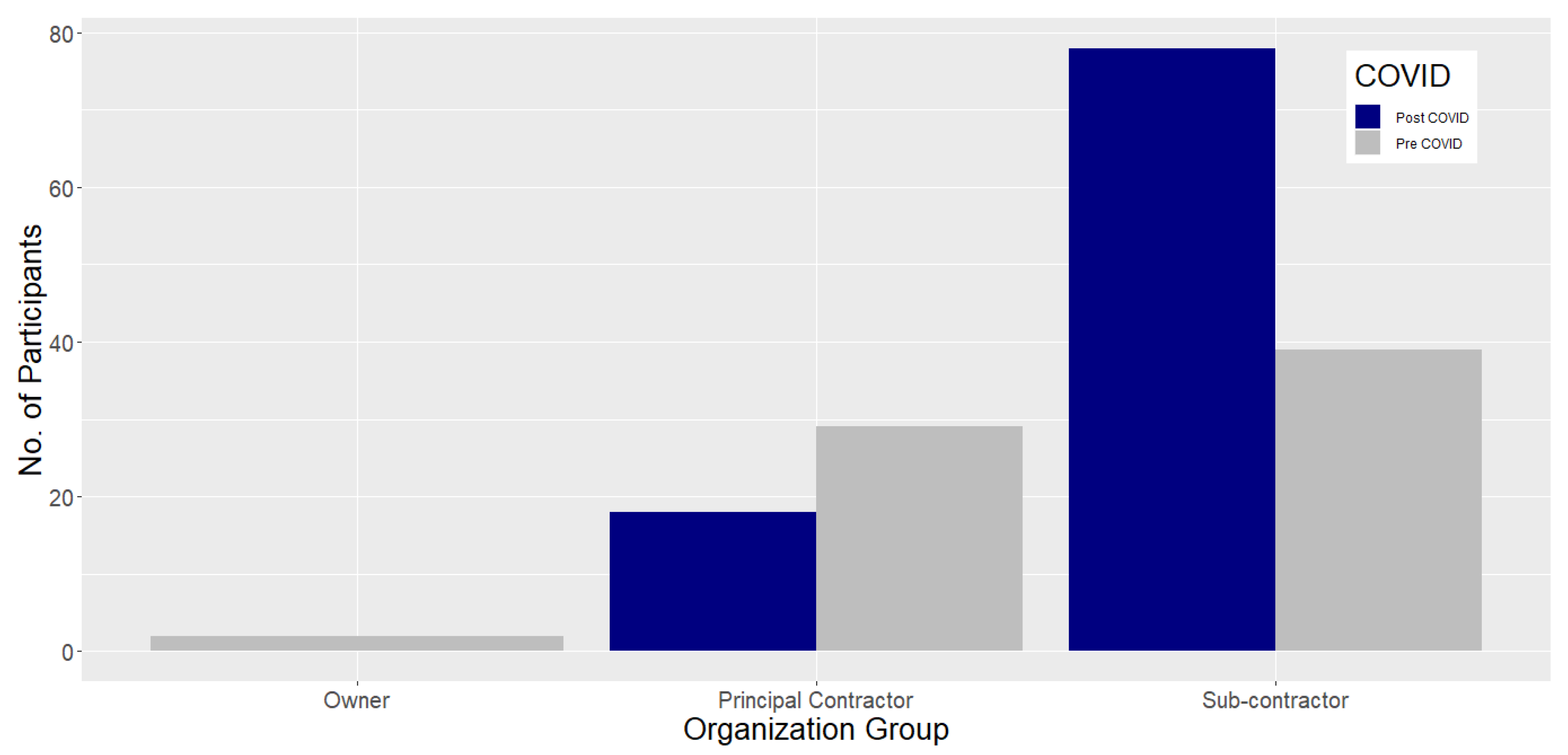
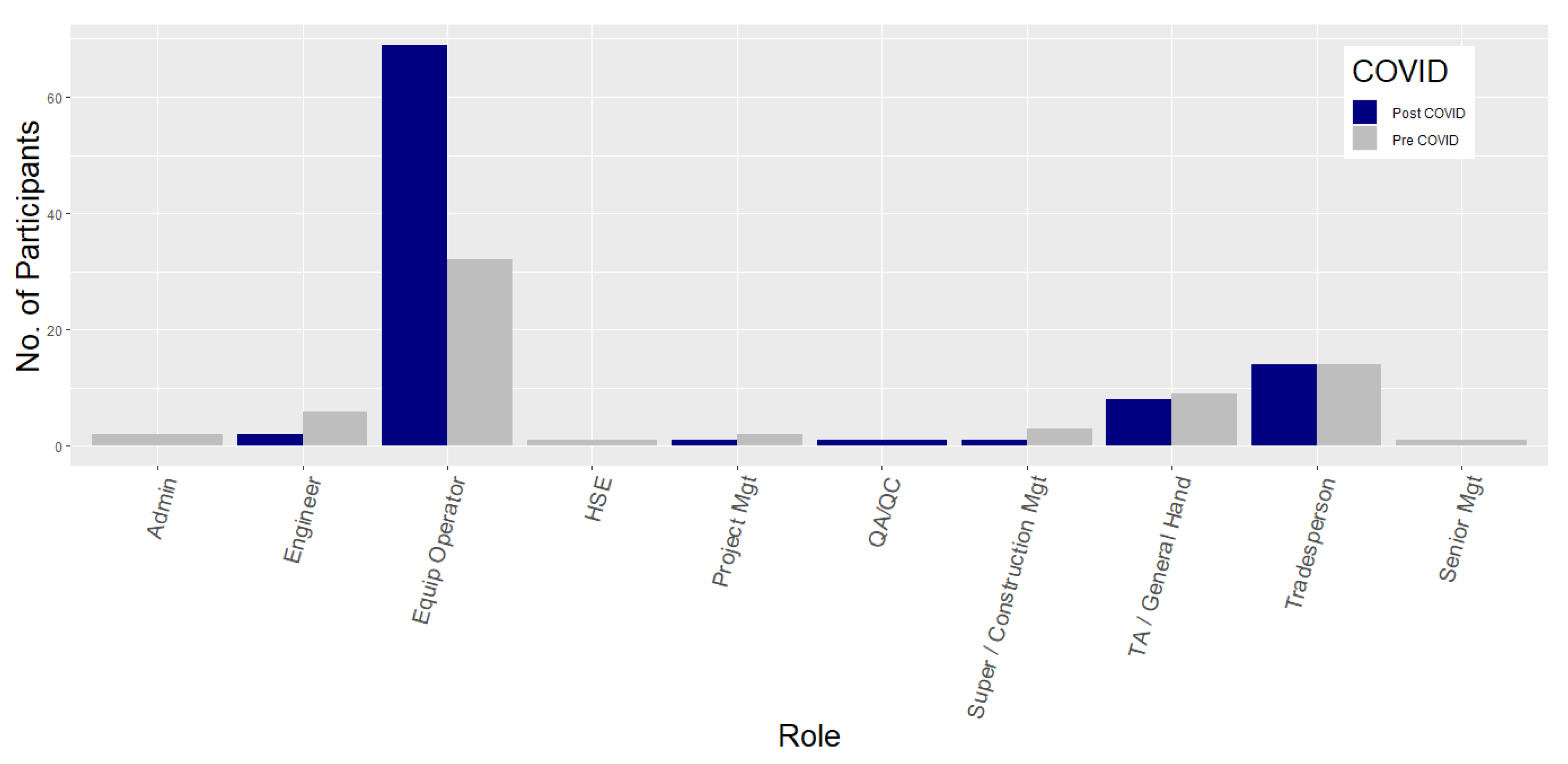

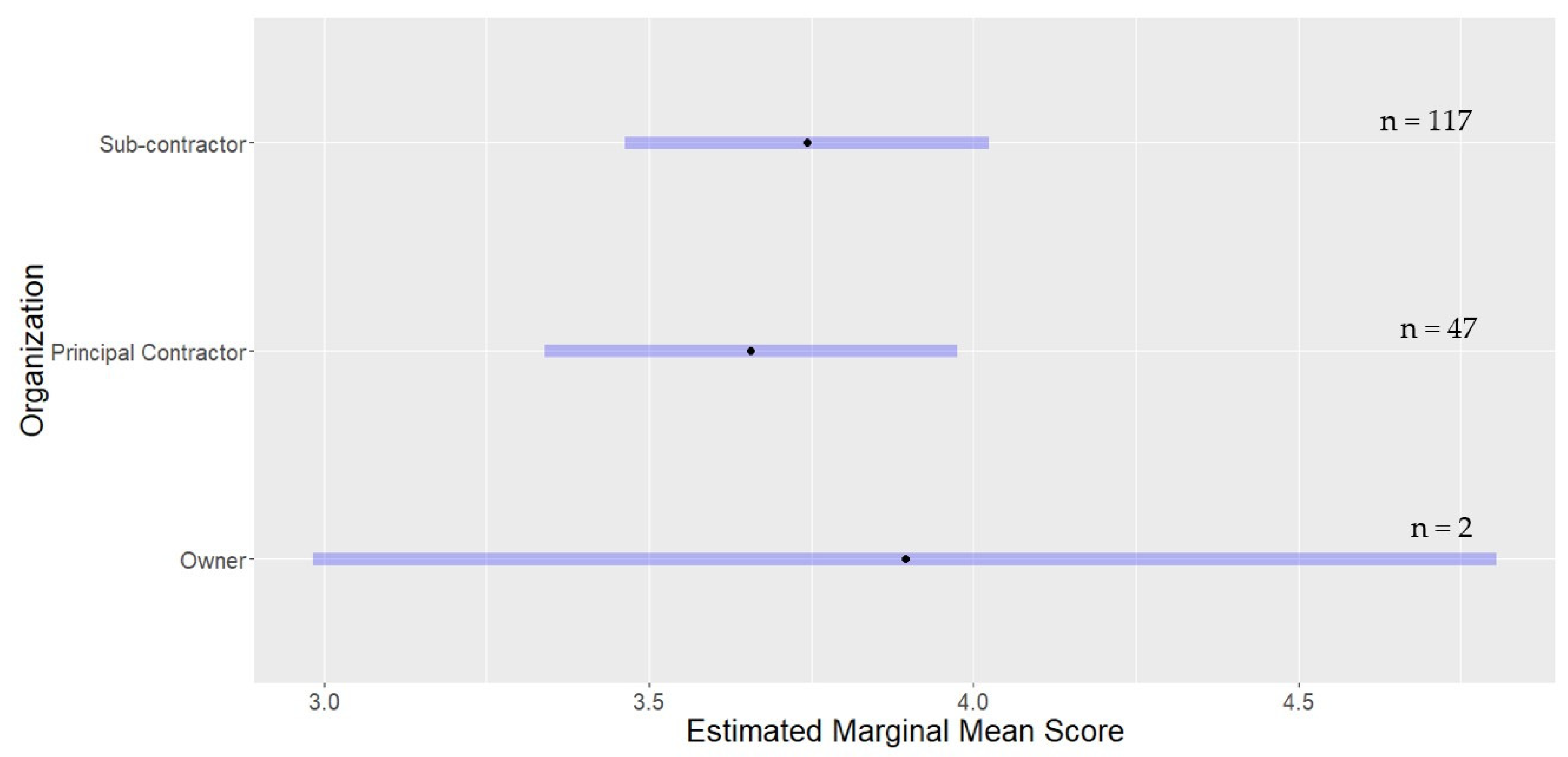
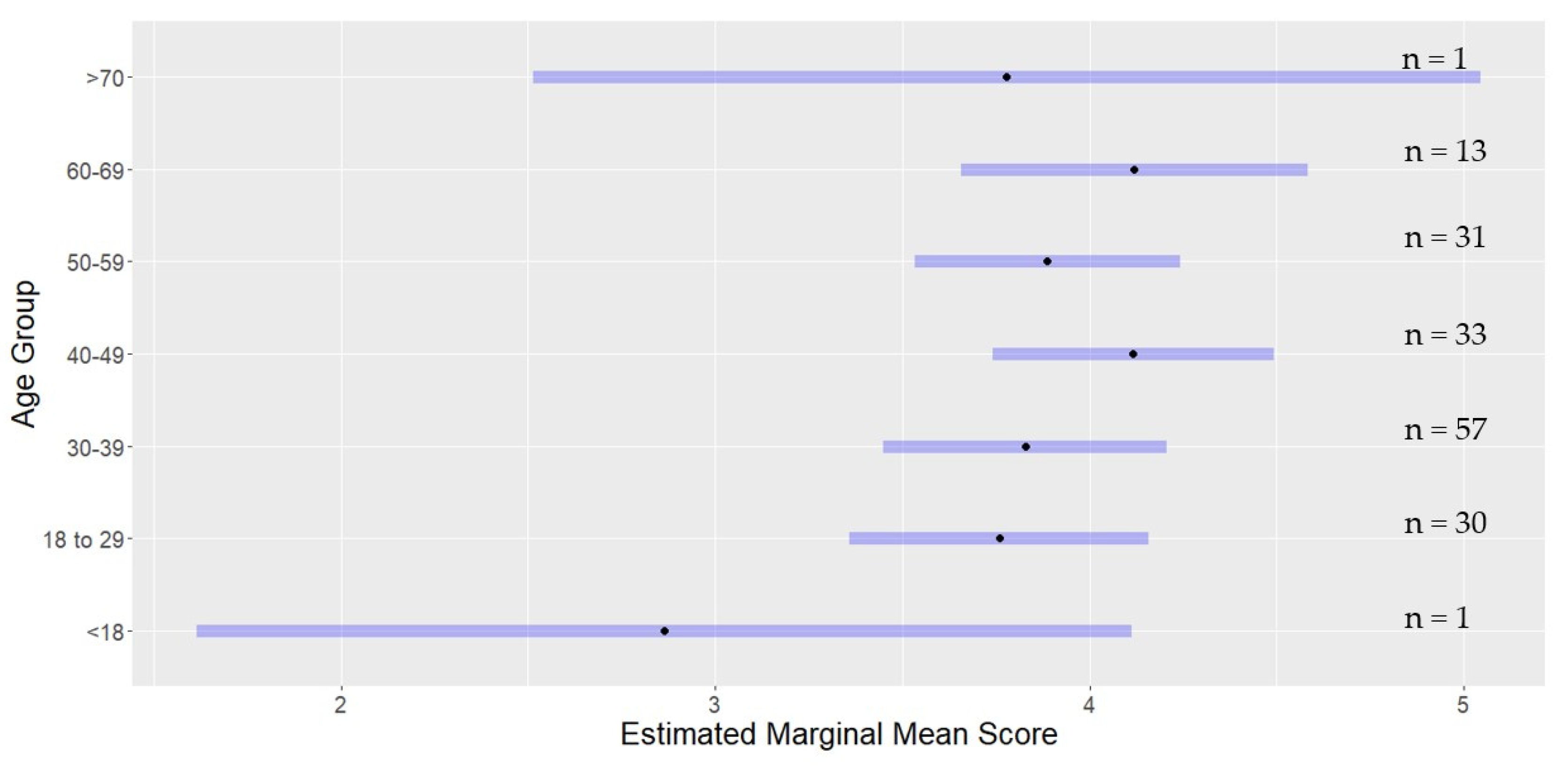
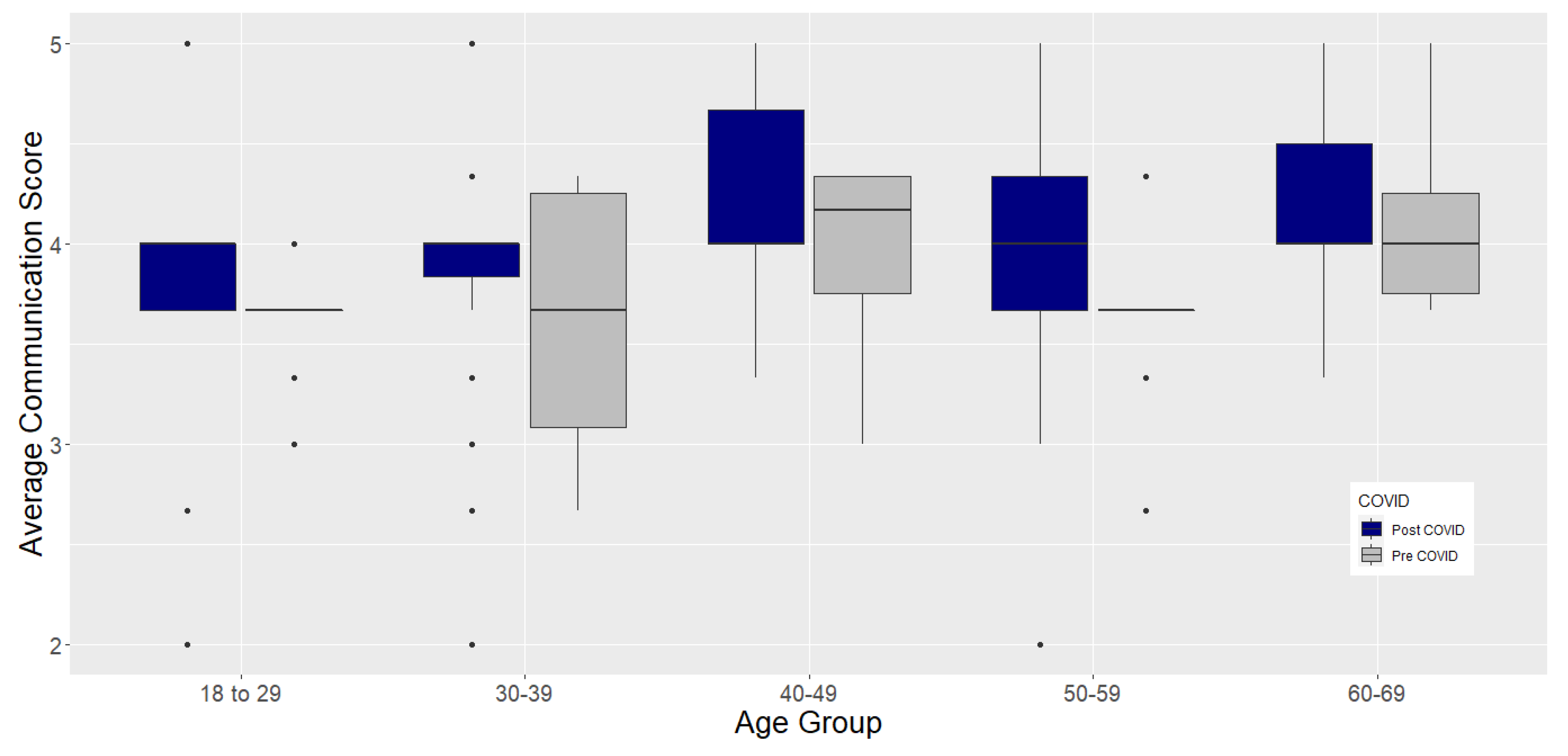
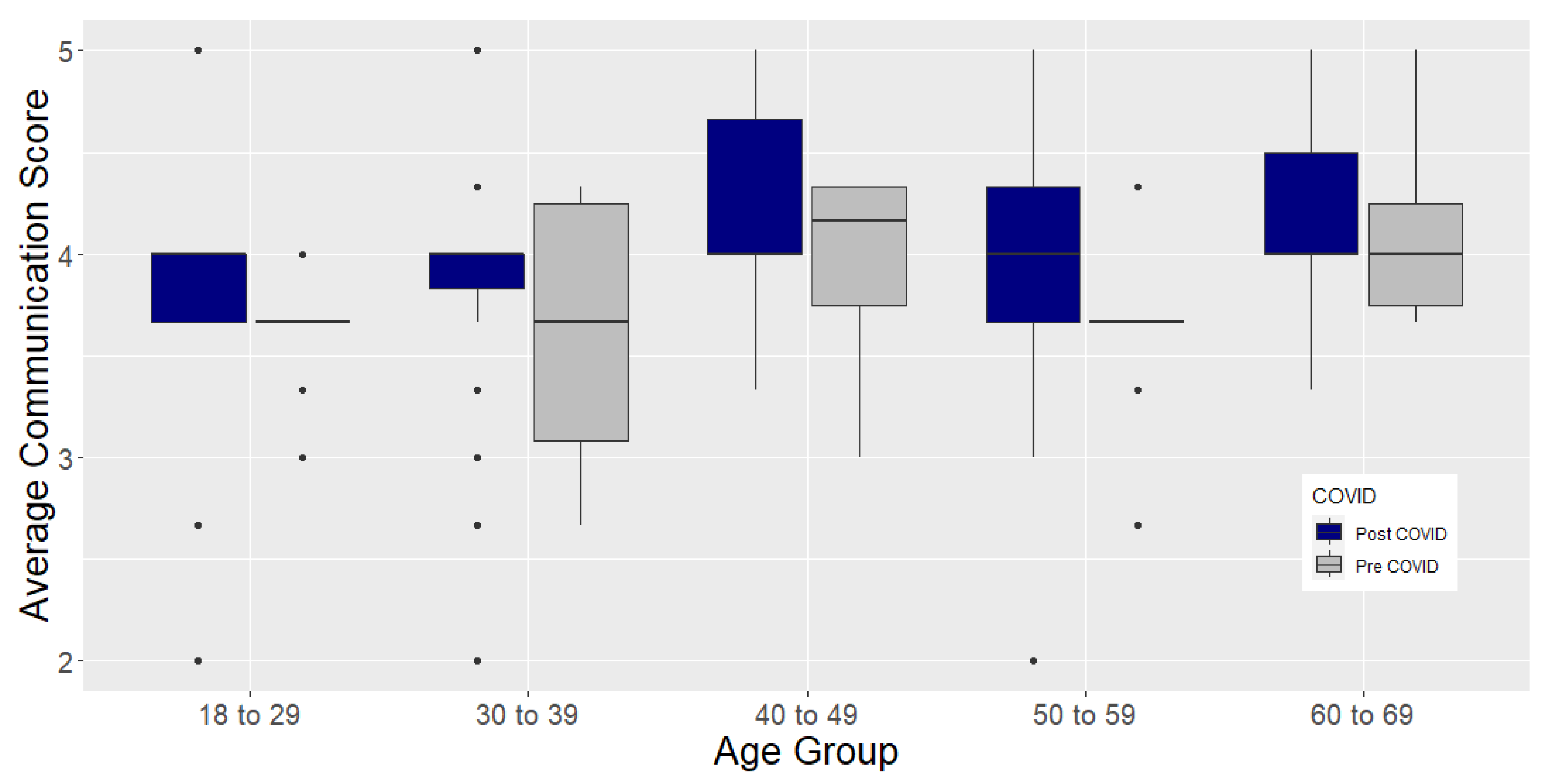
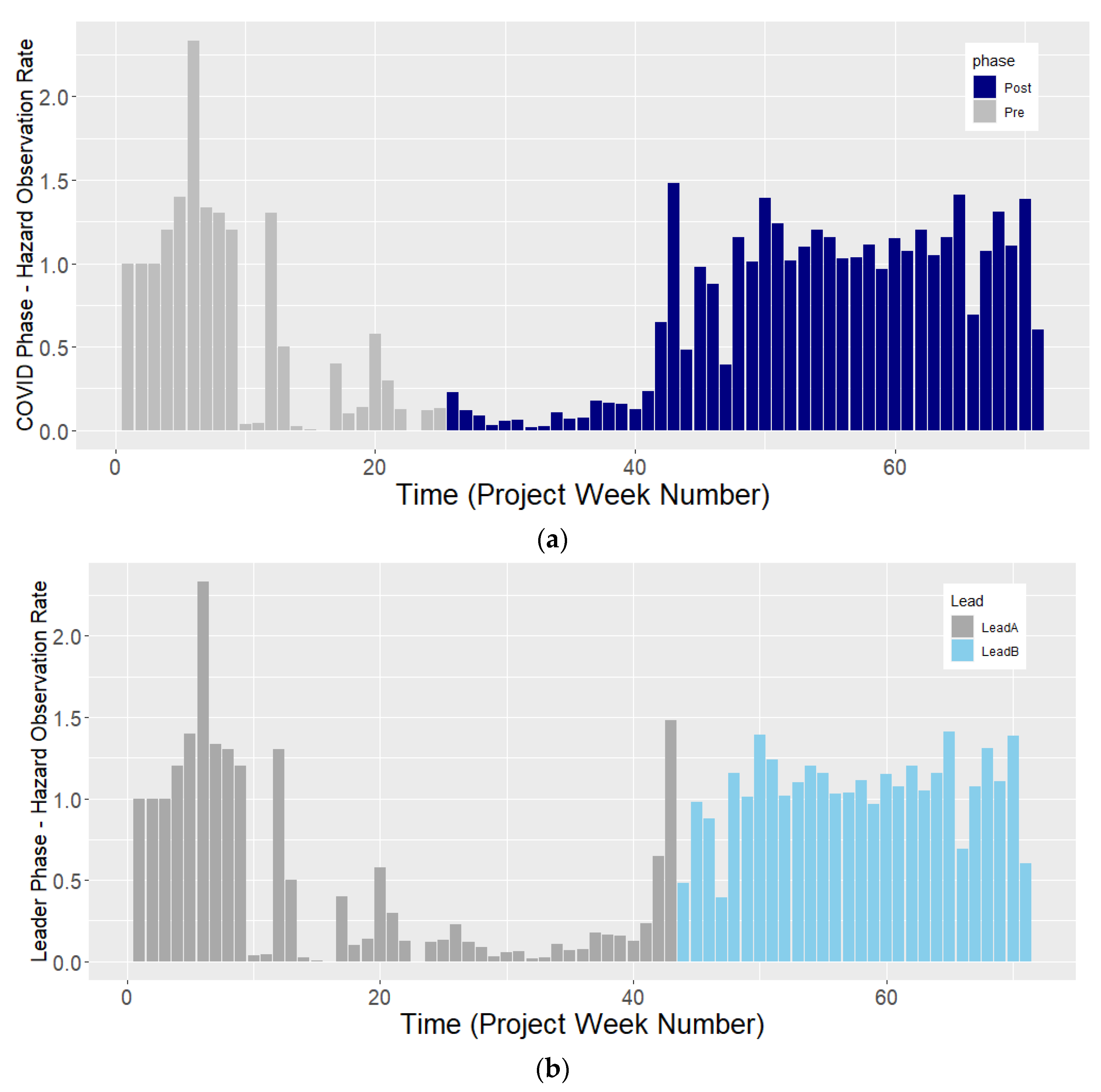

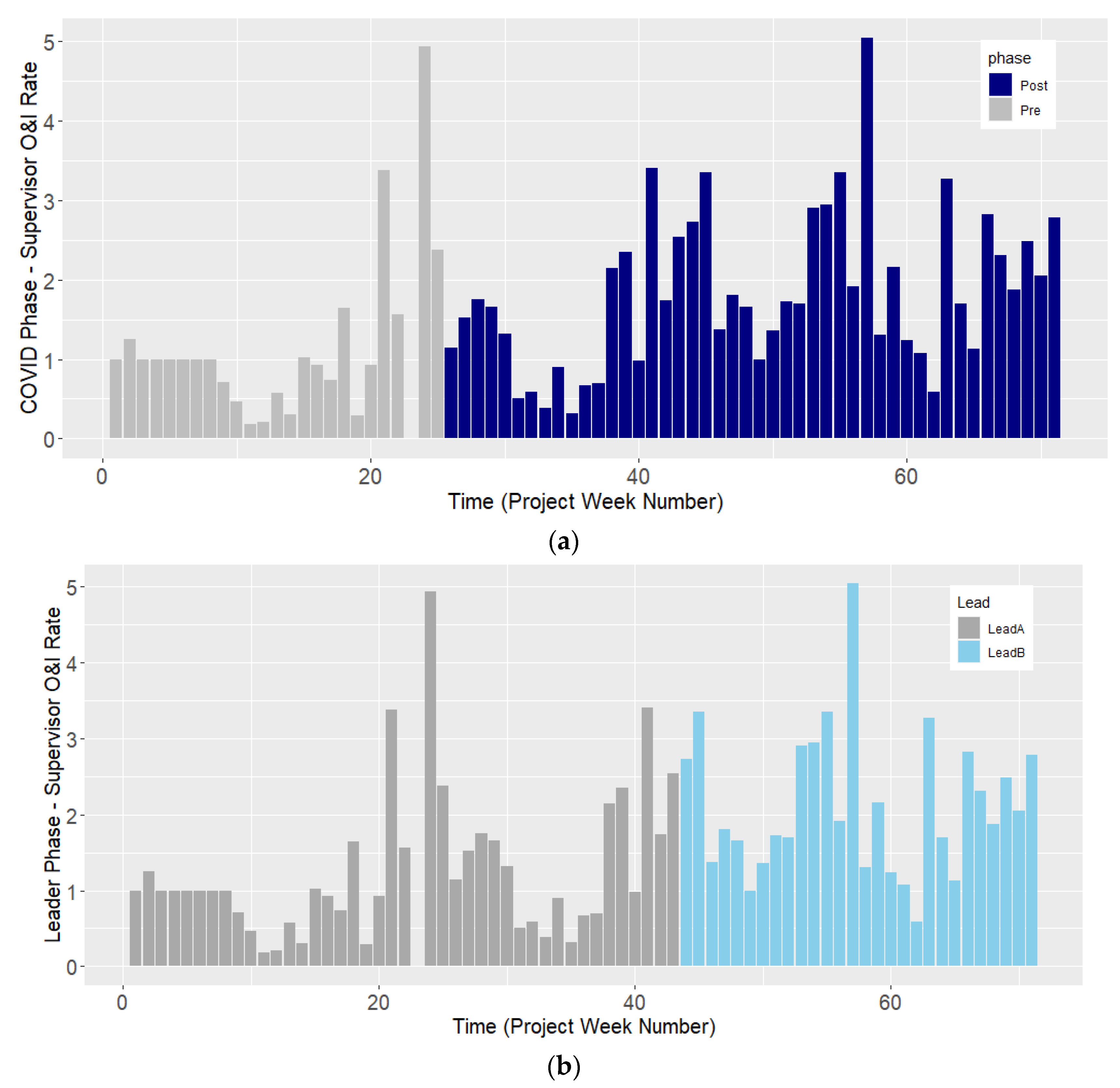
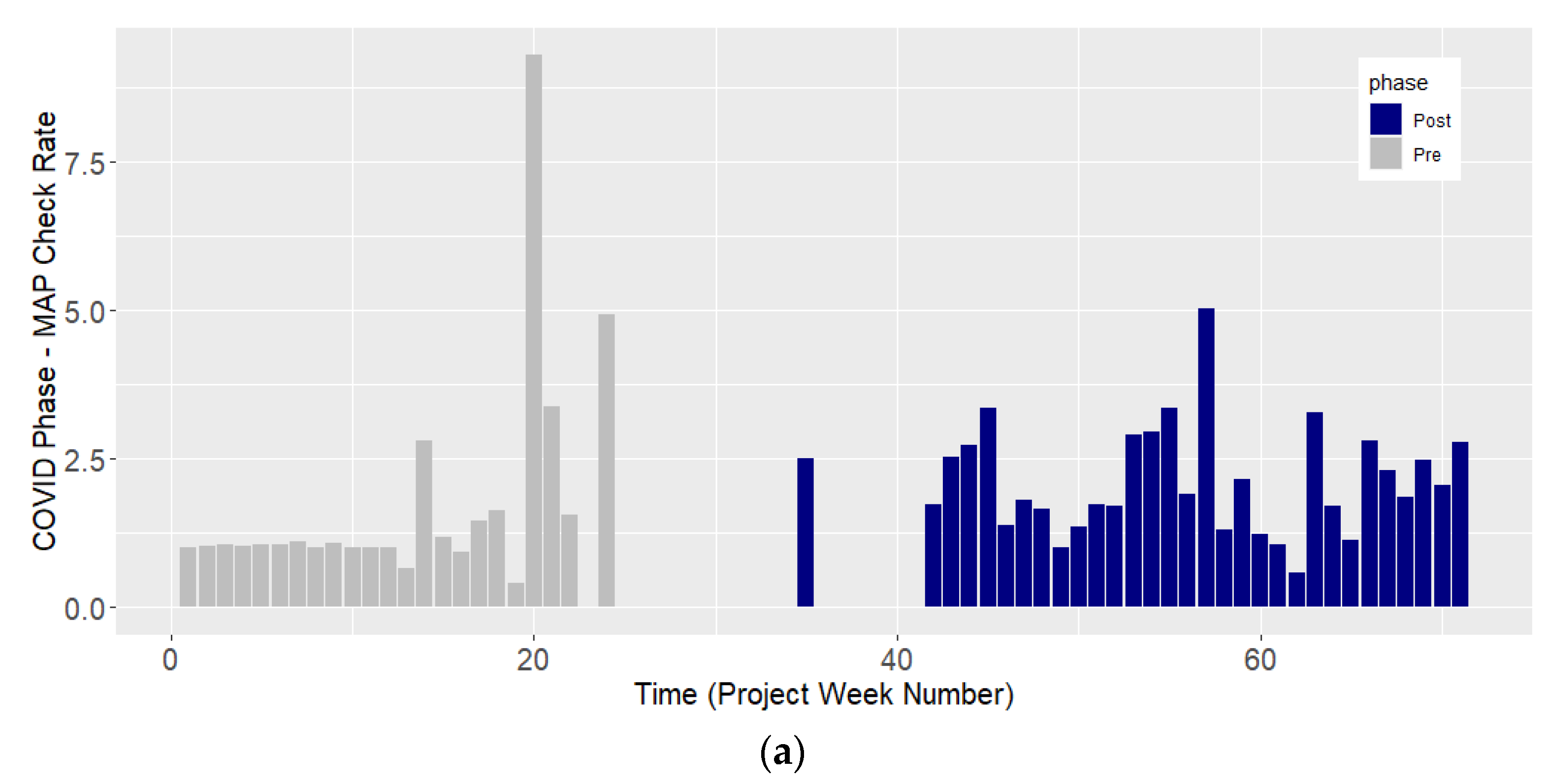
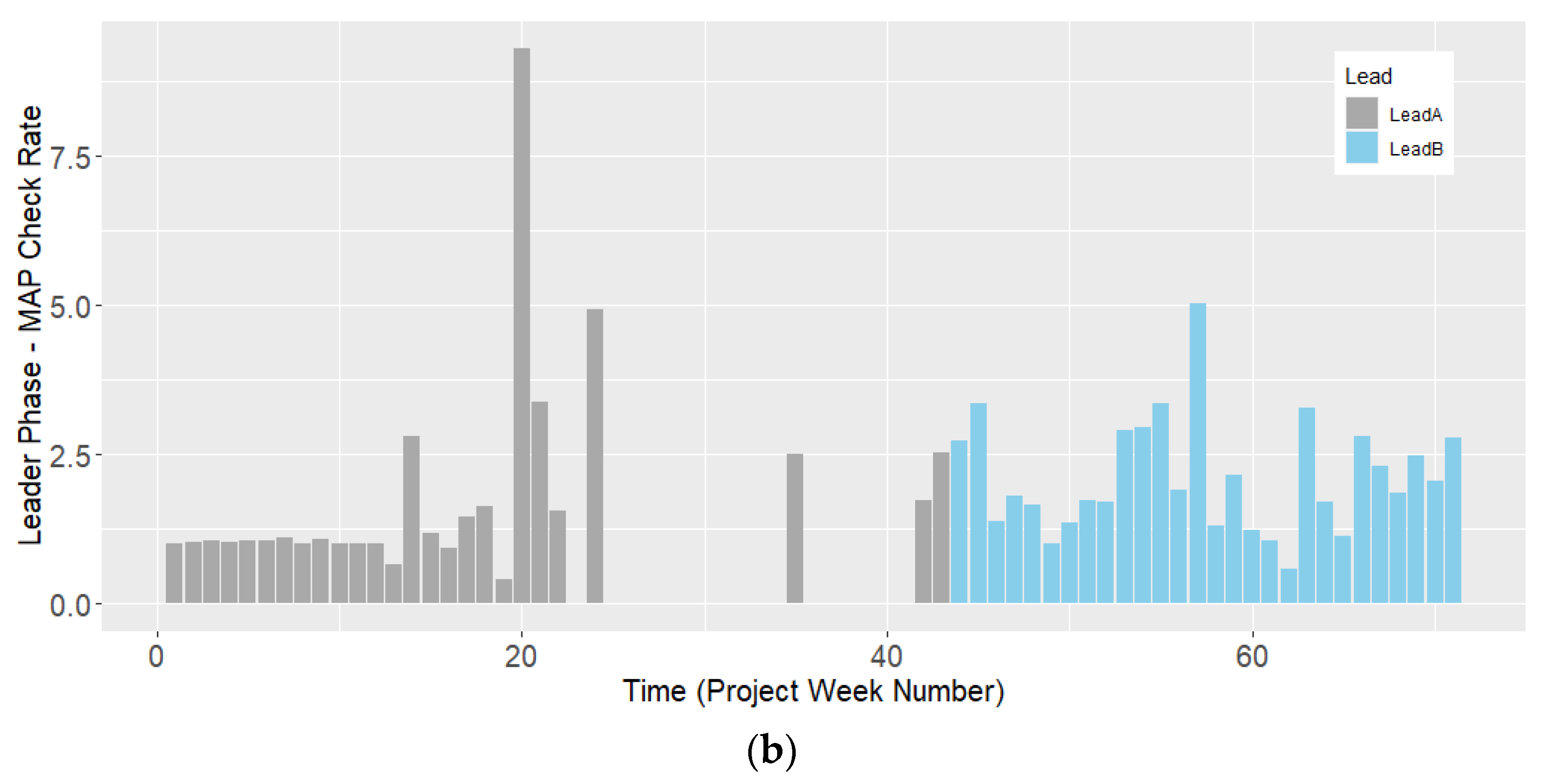
| Project Parameters | Details |
|---|---|
| Location | Pilbara Western Australia |
| Scope | Infrastructure–earthworks, rail formation, tunnel, and bridges |
| Contract Model | Procure, Construct |
| Contract Structure | Joint Venture–self perform with specialist sub-contractors |
| Workhours | 1,120,000 with 270 persons on site at peak |
| Duration | Total: 23 months. On site: 16 months |
| Value | >$500 k AUD |
| Organizational Elements | Likert Scale Units–Group of Questions |
|---|---|
| Company (ORG Avg) | Management Commitment (MC Avg) Communication (COM Avg) Rules and Procedures (RUL Avg) Overall Safety Climate |
| Team (TEAM Avg) | Supportive Environment (SUP Avg) Supervisory Environment (VIS Avg) Workers Involvement (WI Avg) |
| Individual (IND Avg) | Personal Appreciation of Risk Work Hazard Identification (HAZ Avg) Work Pressure (WKP Avg) Competence (CMP Avg) |
| Context Questions | Safety Risks Safety Improvements |
| Measure | Unit |
|---|---|
| Personal Risk Assessments | % completed a |
| Hazard Reports | % completed |
| Supervisor Observations and Interventions | % completed |
| Major Accident Prevention (MAP) Critical Control Checks | % completed |
| Major Accident Prevention (MAP) Audits | % completed |
| Exposure hours | Count |
| Total number of incidents | Count |
| Total incident frequency rates | Frequency rate b |
| Factor: COVID-19 (df 1:154) | |||||
| Likert Scale | Sum Squares | Mean Square | F Values | Pr (>F) | Significant |
| Communication | 4.455 | 4.455 | 12.063 | <0.001 | Yes |
| Supporting Environment | 0.000 | 0.00003 | 0.0001 | 0.994 | - |
| Work Hazard Identification | 0.058 | 0.058 | 0.107 | 0.744 | - |
| Workers Involvement | 0.500 | 0.5003 | 1.087 | 0.299 | - |
| Individual Element | 0.032 | 0.032 | 0.122 | 0.727 | - |
| Team Element | 0.003 | 0.003 | 0.008 | 0.929 | - |
| Factor: ORGANIZATION (df 2:154) | |||||
| Likert Scale | Sum Squares | Mean Square | F values | Pr (>F) | Significant |
| Communication | 0.028 | 0.028 | 0.772 | 0.782 | - |
| Supporting Environment | 2.274 | 1.137 | 2.168 | 0.118 | - |
| Work Hazard Identification | 4.623 | 4.623 | 8.515 | 0.004 | Yes |
| Workers Involvement | 2.782 | 2.781 | 6.042 | 0.015 | Yes |
| Individual Element | 1.018 | 1.018 | 3.916 | 0.049 | Yes |
| Team Element | 2.195 | 2.194 | 6.966 | 0.009 | Yes |
| Factor: GENDER (df 2:154) | |||||
| Likert Scale | Sum Squares | Mean Square | F values | Pr (>F) | Significant |
| Communication | 0.384 | 0.192 | 0.595 | 0.594 | - |
| Supporting Environment | 0.287 | 0.143 | 0.272 | 0.761 | - |
| Work Hazard Identification | 0.062 | 0.031 | 0.057 | 0.944 | - |
| Workers Involvement | 0.234 | 0.117 | 0.254 | 0.776 | - |
| Individual Element | 0.008 | 0.004 | 0.015 | 0.985 | - |
| Team Element | 0.326 | 0.163 | 0.517 | 0.597 | - |
| Factor: AGE (df 6:154) | |||||
| Likert Scale | Sum Squares | Mean Square | F values | Pr (>F) | Significant |
| Communication | 3.915 | 0.652 | 1.767 | 0.109 * | Outliers skew |
| Supporting Environment | 11.039 | 1.839 | 3.508 | 0.003 | Yes |
| Work Hazard Identification | 1.996 | 0.333 | 0.613 | 0.719 | - |
| Workers Involvement | 3.370 | 0.561 | 1.219 | 0.299 | - |
| Individual Element | 1.000 | 0.167 | 0.641 | 0.697 | - |
| Team Element | 3.752 | 0.635 | 1.984 | 0.071 * | Outliers skew |
| Age Group | Estimate Marginal Mean | Standard Error | T Value | Pr (>[t]) |
|---|---|---|---|---|
| 30–39 | 0.069 | 0.140 | 0.495 | 0.621 |
| 40–49 | 0359 | 0.160 | 2.246 | 0.026 |
| 50–59 | 0.129 | 0.165 | 0.781 | 0.436 |
| 60–69 | 0.362 | 0.204 | 1.772 | 0.078 1 |
| Likert Scale | F Value | Pr > (F) | Emmeans (Principal Contractor/Subcontractor) |
|---|---|---|---|
| Work Hazard Identification | 8.515 | 0.004 | −0.428 |
| Workers Involvement | 6.042 | 0.016 | −0.298 |
| Likert Scale | F Value | Pr > (F) | Emmeans (Principal Contractor/Subcontractor) |
|---|---|---|---|
| Team | 6.984 | 0.009 | −0.304 |
| Individual | 3.916 | 0.049 * | −0.214 |
| Safety Climate Measure | Project Factors | |||
|---|---|---|---|---|
| COVID | Organization | Age | Gender | |
| Safety communication | Yes | Yes | Yes * | - |
| Supporting environment | - | - | Yes | - |
| Work Hazard Identification | - | Yes | - | - |
| Worker Involvement | - | Yes | - | - |
| Individual | - | Yes | - | - |
| Team | - | Yes | - | - |
| Factor: COVID-19 (df 1:68) | |||||
| Performance Indicator | Sum Squares | Mean Square | F Values | Pr (>F) | Significant |
| Hazard Observations | 0.164 | 0.164 | 0.819 | 0.369 | - |
| Supervisor Observations | 7.769 | 7.769 | 8.192 | 0.0056 | Yes |
| Critical Control Verifications | 0.543 | 0.543 | 0.295 | 0.589 | - |
| Total Incident Rate | 703,387 | 703,387 | 19.937 | 3.096 × 10−5 | Yes |
| Factor: ORGANIZATION (df 2:154) | |||||
| Performance Indicator | Sum Squares | Mean Square | F values | Pr (>F) | Significant |
| Hazard Observations | 7.624 | 7.624 | 38.687 | 3.49 × 10−8 | Yes |
| Supervisor Observations | 6.401 | 6.401 | 6.749 | 0.011 | Yes |
| Critical Control Verifications | 33.737 | 33.737 | 18.356 | 5.905 × 10−5 | Yes |
| Total Incident Rate | 19,059 | 19,059 | 0.540 | 0.469 | - |
Publisher’s Note: MDPI stays neutral with regard to jurisdictional claims in published maps and institutional affiliations. |
© 2022 by the authors. Licensee MDPI, Basel, Switzerland. This article is an open access article distributed under the terms and conditions of the Creative Commons Attribution (CC BY) license (https://creativecommons.org/licenses/by/4.0/).
Share and Cite
Selleck, R.; Cattani, M.; Hassall, M. How Did COVID-19 Pandemic Impact Safety Performance on a Construction Project? A Case Study Comparing Pre and Post COVID-19 Influence on Safety at an Australian Construction Site. Safety 2022, 8, 77. https://doi.org/10.3390/safety8040077
Selleck R, Cattani M, Hassall M. How Did COVID-19 Pandemic Impact Safety Performance on a Construction Project? A Case Study Comparing Pre and Post COVID-19 Influence on Safety at an Australian Construction Site. Safety. 2022; 8(4):77. https://doi.org/10.3390/safety8040077
Chicago/Turabian StyleSelleck, Roberta, Marcus Cattani, and Maureen Hassall. 2022. "How Did COVID-19 Pandemic Impact Safety Performance on a Construction Project? A Case Study Comparing Pre and Post COVID-19 Influence on Safety at an Australian Construction Site" Safety 8, no. 4: 77. https://doi.org/10.3390/safety8040077
APA StyleSelleck, R., Cattani, M., & Hassall, M. (2022). How Did COVID-19 Pandemic Impact Safety Performance on a Construction Project? A Case Study Comparing Pre and Post COVID-19 Influence on Safety at an Australian Construction Site. Safety, 8(4), 77. https://doi.org/10.3390/safety8040077







